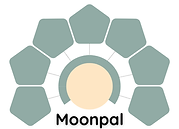Unveiling the Secrets of Compelling SaaS Product Management Storytelling: A Thrilling Adventure into the Unknown
- Guillaume Vives

- Mar 17
- 4 min read
In the fast-paced world of SaaS (Software as a Service) product management, storytelling is often undervalued. Yet, it is far more than a marketing tactic; it is a vital ingredient for your product's success. Effective storytelling can engage users, turn skeptics into fans, and transform basic software into exceptional experiences.
As we embark on this exciting journey to uncover the secrets of storytelling in SaaS product management, prepare to learn how to create narratives that resonate with your users. These narratives will not only help them understand your product but also make them feel passionate about it.
The Importance of Storytelling in SaaS
In the competitive SaaS landscape, storytelling serves as a unique advantage. It connects users to your product on an emotional level. Instead of merely presenting features, you illustrate how your product solves real problems.
Think of it this way: presenting your software as the hero in a captivating adventure fosters relatability and builds a bridge with your audience. Users will visualize how your SaaS product can influence their lives, turning it into a part of their own stories. For instance, companies that utilize storytelling in their marketing reportedly see engagement rates increase by up to 30%.
Crafting Your SaaS Narrative
To harness the full power of storytelling within your product management strategy, follow these key steps:
1. Know Your Audience
Understanding your audience is essential for effective storytelling. Each audience group has unique pain points and aspirations.
For instance, consider two different users: a tech-savvy marketing manager looking for analytics tools versus a small business owner seeking budget-friendly solutions. Perform user research, collect feedback, and create personas that represent your users. This knowledge will help you craft narratives that deeply resonate with them.
2. Define the Problem
Every compelling story begins with a relatable challenge. In SaaS, pinpoint the specific issues your users face and incorporate them into your narrative.
For example, if your software automates data entry, illustrate the hours wasted on manual entry. Use relatable scenarios, like a small business owner spending an entire day on paperwork instead of focusing on growth. Highlighting how much time—say, up to 10 hours a week—could be saved by your solution makes the problem tangible and engaging.
3. Introduce the Hero
In SaaS storytelling, your product often takes center stage as the hero. Showcase how your software tackles the problems mentioned earlier.
Instead of saying, "Our software automates tasks,” you might say, “Our software streamlines time-consuming manual tasks, freeing up 10 hours each week for you to focus on strategic initiatives." Highlight how your product creates real value for the user.
4. Create an Emotional Connection
Emotions play a crucial role in storytelling. Build an emotional connection by incorporating relatable characters or experiences.
Use testimonials and case studies to share real-life experiences. For example, a customer might describe how using your product led to a 50% increase in productivity. Sharing such compelling stories enhances authenticity and fosters empathy, enabling users to connect on a deeper level.
5. Highlight the Transformation
Every effective story showcases transformation. Show what life looks like after users adopt your product.
Share success stories and the outcomes they can expect. For example, highlight that a client who struggled with customer interactions improved their response time from 24 hours to just 2 hours after implementing your software. Utilize visuals, statistics, or infographics to make the transformation clear and engaging.

Storytelling Across Touch Points
Once you've crafted your compelling SaaS narrative, it's essential to share it consistently across all channels.
Onboarding Experience
User onboarding is often the first interaction users have with your product. Infuse storytelling into this experience. Guide users through their journey, emphasizing the software's benefits. For example, instead of simply listing features, tell them how each feature can solve problems they might encounter.
Marketing Content
Every piece of content you produce should reflect your overarching story. Create engaging blog posts, social media snippets, and emails that encourage action.
Use the same narrative voice to ensure consistency. For example, if your narrative focuses on saving time, every piece of content should highlight this theme.
Support Channels
Your storytelling should continue even after a purchase. Use narratives in support documents to make your content engaging. Consider creating chatbots or support emails formatted like a story to assist users in overcoming challenges.

The Power of Feedback Loops
To constantly improve your storytelling, you need feedback loops. Gather insights from users about how the story resonates with them and what challenges they still face.
This information is invaluable. It helps you modify and enhance your narrative, ensuring it remains relevant in an ever-changing market. For instance, if users report that a particular feature isn't meeting their needs, it’s time to highlight a different aspect of your product that can better serve them.
Embracing the Journey Ahead
Mastering the art of storytelling in SaaS product management is a transformative journey that alters how users perceive and connect with your product. By weaving emotional and practical narratives, you can guide your audience through challenges and encourage them to envision new possibilities.
As you refine your storytelling techniques, remember: every product has a unique story. Embrace it, and watch as it captivates your audience, inspires loyalty, and turns users into passionate advocates for your SaaS solution. Take that leap into the unknown and unlock the full potential of your storytelling skills!
.png)



Comments